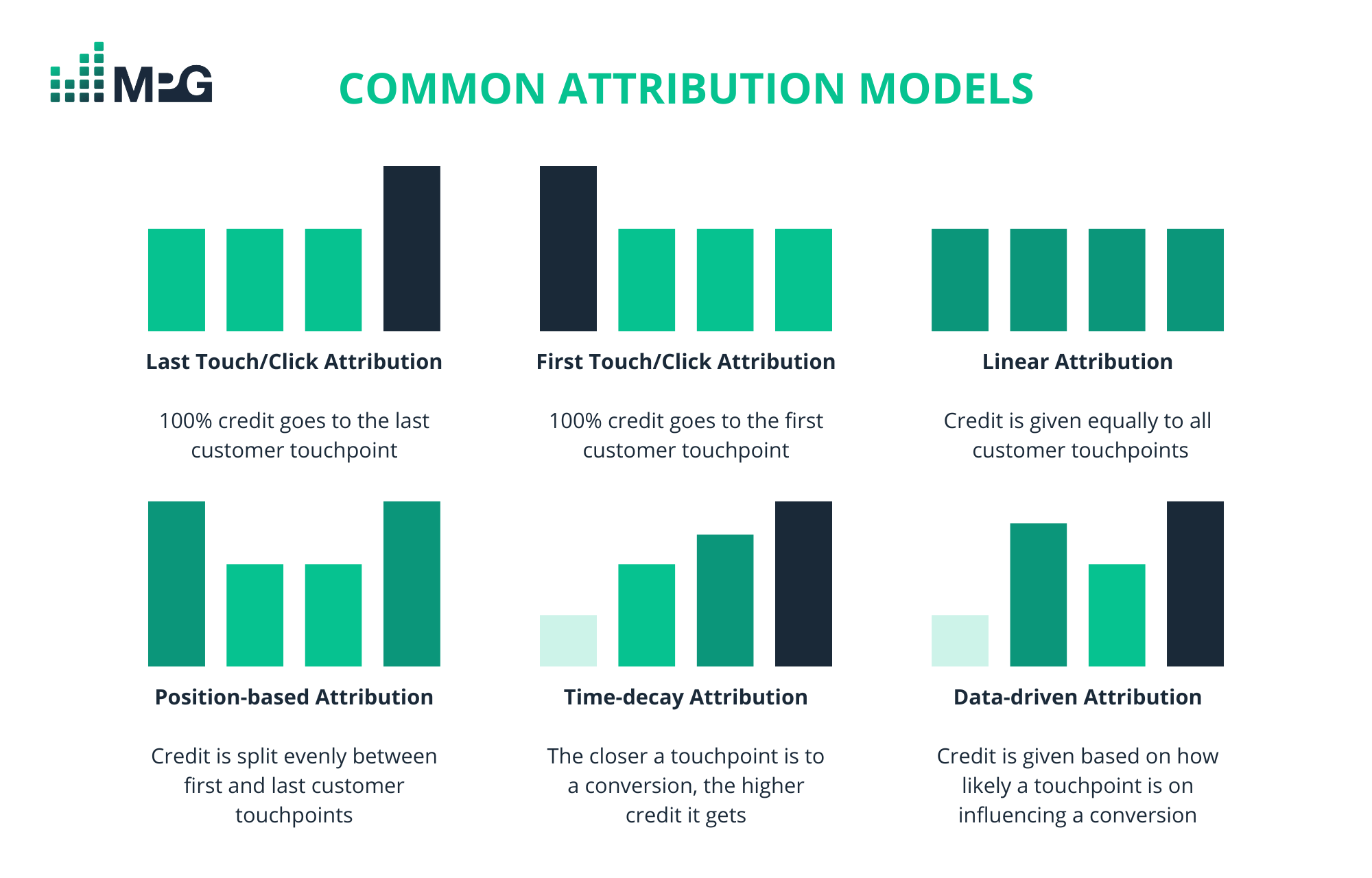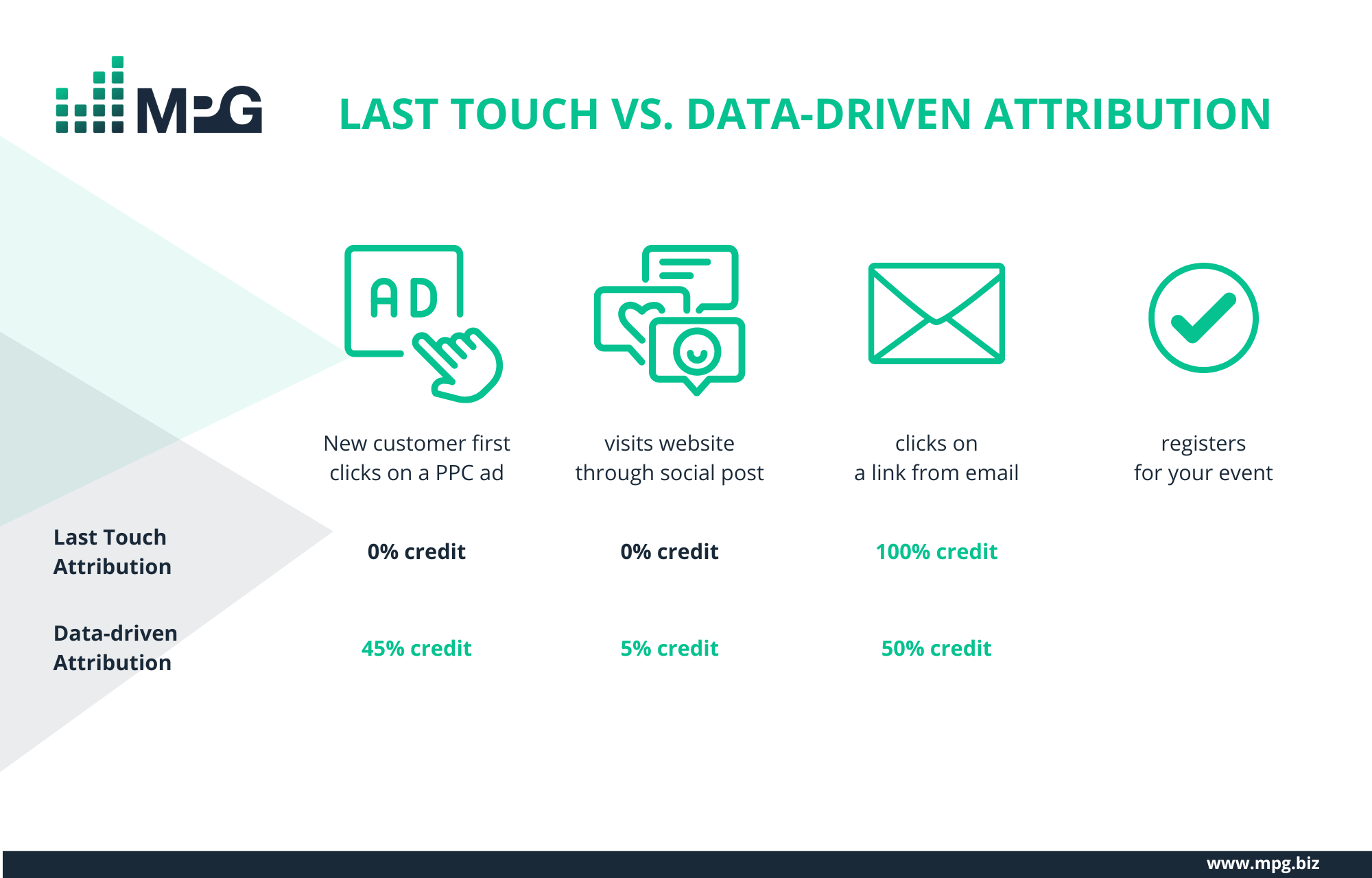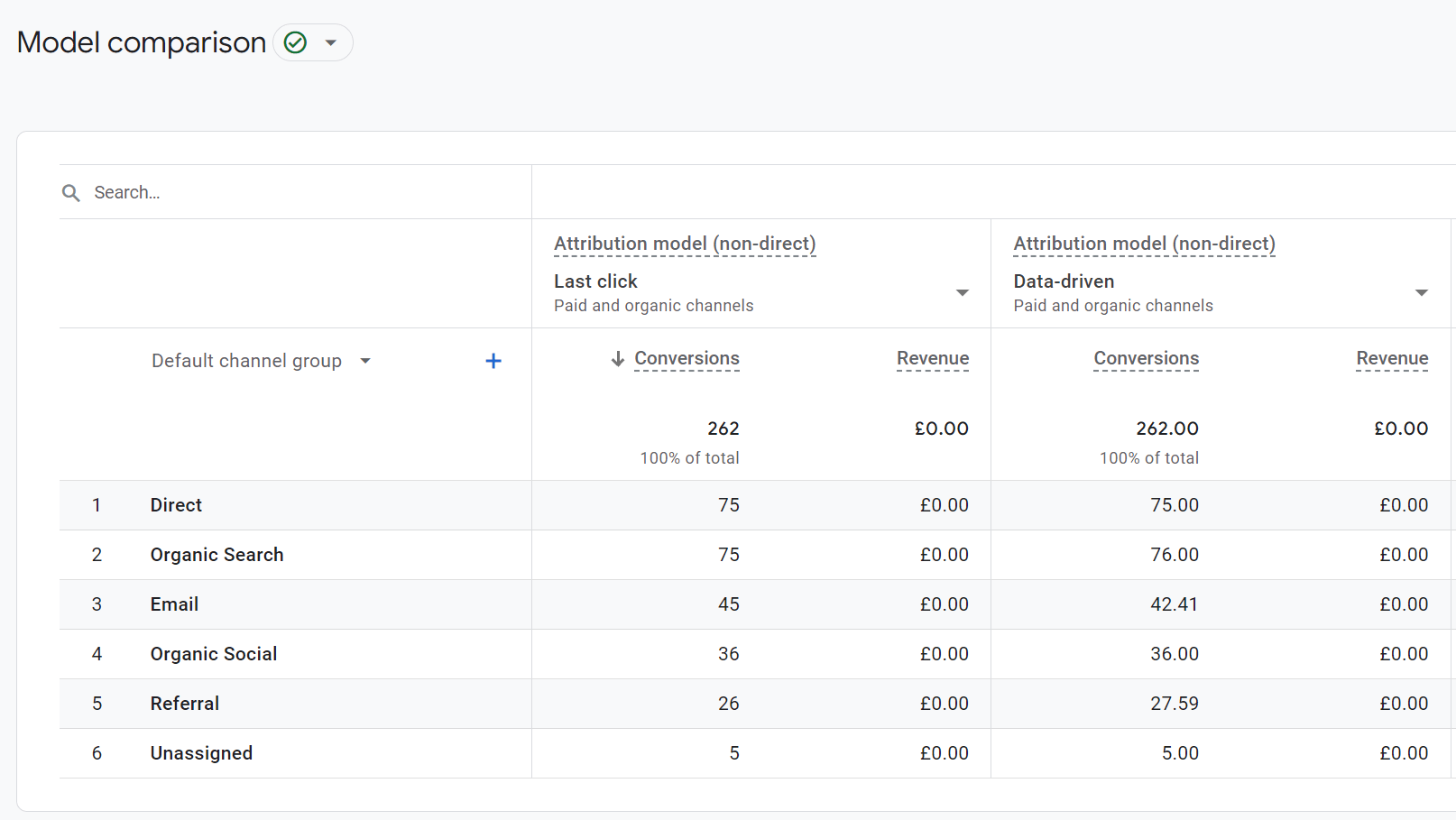Attribution modeling - the move to data-driven conversions
With artificial intelligence (AI) becoming a prominent part of digital marketing, the realm of attribution modeling has been revolutionised with advanced algorithms and predictive models that can significantly enhance the accuracy and effectiveness of attribution strategies. In this blog, we’ll explore how AI-driven attribution can help unlock new insights for businesses to optimise their marketing efforts and drive meaningful results.
What is attribution modeling?
Attribution modeling is a set of rules that determines how credit is given to marketing channels, providing deeper insights into how impactful each touchpoint on the customer’s journey is in driving conversions. This enables marketers to take a holistic view of their marketing efforts, understand how customers move through the conversion path, identify the influence of each channel to maximise ROI, and optimise strategy to deliver tailored campaigns and content specific to each persona.
Attribution modeling types
 Over time, multiple attribution models have been developed to address the complex nature of the sophisticated customer journeys audiences take nowadays. There is no one-size-fits-all model and what you choose to use depends on the product, length of the sales cycle, and what decisions businesses need to make. Different reporting tools may also use different methodologies for attribution (e.g. Pardot’s default is First click whilst Facebook Ads’ default is Last click). This month, Google will be phasing out First click, Linear, Time decay, and Position-based attributions for Google Analytics 4 and Google Ads, leaving marketers with two attribution model options: Last touch (Last click) and Google’s recommended model - Data-driven. But what do these mean?
Over time, multiple attribution models have been developed to address the complex nature of the sophisticated customer journeys audiences take nowadays. There is no one-size-fits-all model and what you choose to use depends on the product, length of the sales cycle, and what decisions businesses need to make. Different reporting tools may also use different methodologies for attribution (e.g. Pardot’s default is First click whilst Facebook Ads’ default is Last click). This month, Google will be phasing out First click, Linear, Time decay, and Position-based attributions for Google Analytics 4 and Google Ads, leaving marketers with two attribution model options: Last touch (Last click) and Google’s recommended model - Data-driven. But what do these mean?
#1 Last Touch / Last Click Attribution
This once-popular method assigns 100% credit to the final touchpoint that the customer interacted with before converting, providing insights on the marketing channel that directly generates a conversion. For example, if a new customer clicks on a PPC ad, then later visits the website through a social post, then receives a marketing email and registers for your event from the email, 100% of the credit is assigned to email, even though PPC and social media was an important step in their customer journey. Although this method is straightforward to implement and is recommended for shorter sales cycles, it holds some limitations of being a single-touch approach, meaning credit is not given to any other channel - no matter how impactful they might have been to the conversion. This fragments the customer journey and ignores the importance of the initial awareness and consideration stages of a conversion path. As marketers aim to gather more data throughout the conversion funnel to inform marketing decisions, last touch will likely be replaced by more advanced models that utilise AI and machine learning to analyse and predict user behaviour, including data-driven attribution.
#2 Data-driven Attribution
Data-driven attribution, Google Analytics 4’s default attribution model, is a new, dynamic approach that uses algorithms to distribute credit for conversions based on each channel’s click interaction, taking into account all touchpoints throughout the customer journey. It considers multiple data points, from time between interactions, to ad format and more, whilst removing our own personal biases to calculate and calibrate the incremental value of each marketing channel. In our example (where a new customer clicks on a PPC ad, then later visits the website through a social post, then receives a marketing email and registers for your event from the email), data-driven attribution means a specific proportion of the credit is assigned to each marketing channel dependent on the influence that it likely had in the resulting conversion - so it could be that some of the conversion is attributed to email, some to social and some to PPC. 
This method provides a holistic view of the whole marketing campaign, going beyond one single interaction and surfacing insights on the impacts of marketing channels on earlier stages of the conversion funnel. By evaluating both the converting and non-converting paths (comparing what happened and what could have happened), data-driven attribution enables insights into how much each marketing channel contributes to generating a conversion. As a result, marketers are also enabled to allocate marketing budgets and make data-driven decisions more effectively with a deeper understanding of customer behaviour.

Difference in results between Last click vs. Data-driven attribution on GA4 Conversion report
However, like any other attribution model, data-driven also has certain considerations that marketers need to be aware of. Since data-driven attribution fully relies on the algorithms for credit assignment, it is susceptible to:
#1 - Learning period and data requirements:
Data-driven attribution requires a sufficient amount of conversion data to accurately assign credit, as it needs to learn from multiple different scenarios and combinations of touchpoints to calibrate its values. With Universal Analytics sunsetting deadline coming, businesses who use Google Analytics for reporting need to make the switch quickly to gather enough data to feed into the algorithms, enabling them to provide accurate results early on (Google recommends at least 28 days of historical data for best results). Whilst the threshold is still unclear, GA4 may default the results in its reports back to last touch/click if there is not enough data.
#2 - Algorithmic biases:
Like any data-driven approach, the data-driven attribution model may have algorithmic biases from biased training data or limitations in the underlying algorithms. It is essential for businesses to set up GA4 accurately from the start to ensure traffic tracked is accurate and reflective of the true paths customers take towards a conversion, minimising any potential biases that may affect the accuracy or fairness of the attribution results. If you don’t already have GA4 implemented, or GA4 has been put in place without consideration of your business goals and marketing objectives, you need to take action now. Our web analytics experts are here to make sure you don’t put a foot wrong in your GA4 journey! Get in touch today.
#3 - Lack of visibility:
As data-driven attribution is fully reliant on Google’s infrastructure and algorithms working in the background, there is no visibility of how exactly credits are being assigned.
Implications for businesses
As the customer journey becomes more complex and analytics continues to be developed, data-driven attribution and its algorithms will also be improved upon. Regular monitoring and evaluation of the attribution model's outputs are necessary to identify and address any algorithmic biases or limitations. Businesses should also ensure they have access to comprehensive and reliable data that covers all touchpoints and channels in the customer journey to facilitate accurate algorithm learning. The implementation of data-driven attribution will also result in more complex reporting, with Google introducing additional metrics to enable deeper analysis. Marketers need to stay on top of these data points, as well as cross-reference them with additional metrics across other tools and platforms to uncover valuable insights on high-performing marketing channels to inform overall marketing strategy. Embracing data-driven attribution and leveraging AI technologies enables businesses to gain a competitive edge in the evolving digital landscape. With data-driven conversions, businesses can extract actionable insights from vast amounts of traffic data, optimise marketing strategies, and make data-driven decisions. This empowers businesses to stay agile, capitalise on market opportunities, and deliver targeted and personalised experiences to their audience, ultimately driving growth and success.
Do you need help putting GA4 in place or optimising it to capture the data you need to run your business well?
MPG’s web analytics experts are trained and experienced in GA4 set up and optimisation, so we’re a safe pair of hands to help you make this critical transition well.

Jenny Fazakerley, Head of FT Board Director Programme UK Financial Times
MPG developed some valuable analytics dashboards that give us constant visibility of how our website and other marketing channels are performing. This means our senior stakeholders can easily understand how various marketing initiatives are performing, and then make good decisions to get the most out of our marketing investments. We recommend working with MPG’s analytics and marketing experts!



